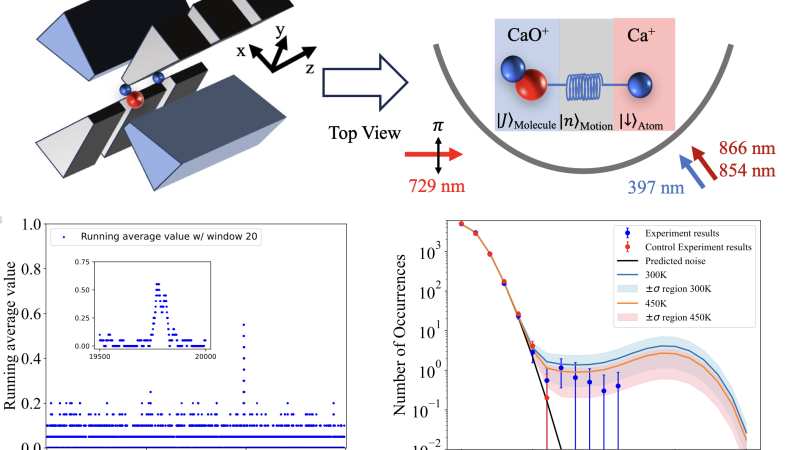November 11, 2024

The coherent control of the complex internal states of molecules and molecular ions has unlocked new possibilities in precision measurements, quantum chemistry, quantum simulation, and quantum information processing. In molecular ion research, quantum logic spectroscopy (QLS) has emerged as a powerful method for preparing and measuring the internal states of single molecular ions. Originally developed for use in trapped atomic ion clocks, QLS transfers the quantum information from a trapped molecular ion’s internal state to its motional state, which is then read out via a co-trapped atomic ion. Recently, a novel approach called dipole-phonon quantum logic (DPQL) has been proposed by our collaborator Eric Hudson and Wes Campbell from UCLA. This technique leverages the interaction between the permanent dipole moment of a polar molecular ion and the trap’s electric field. In this scheme, opposite-parity states, such as the Λ and Ω doublets of specific rotational states, are used to enable the interaction between molecular dipole and ion trap phonon. DPQL offers new tools for molecular state preparation and measurement, with potential applications in generating atom-molecule entanglement and facilitating long-distance interactions between molecular ions via virtual phonons across a trapped ion chain.
In our recent work (https://arxiv.org/abs/2411.07137), we demonstrate coherent control and detection of the coupling between the Ω-doublets of the ground rotational state of CaO⁺ and its phonon mode in a room-temperature system. We present evidence of a DPQL signal that is clearly above the system's noise threshold, with a statistical significance of at least 4.1σ and an average posterior probability of 99.8%. Although the observed detection rate and lifetime of the DPQL signals were lower than expected, these results align with theoretical predictions when accounting for the local blackbody radiation temperature in the trapping region and the effects of background gas collisions. Future experiments could significantly enhance the occurrence rate of dipole-phonon interactions by using a cryogenic ion trap. This setup would increase the population and lifetime of the ground rotational state while reducing uncertainties from background collisions. Additionally, it is promising to prepare CaO+ in higher rotational states, increasing the coupling strength of the dipole-phonon interaction for practical applications.